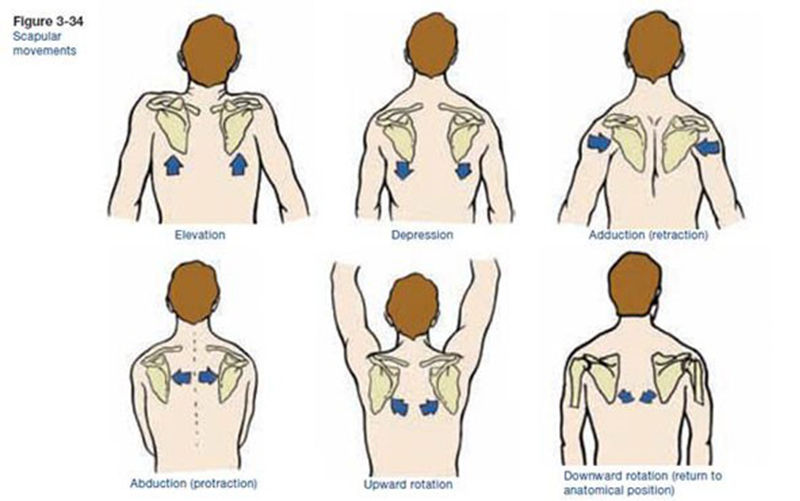As a fitness professional and an exam candidate, there is no way of getting around the fact that you need to know your anatomy! Understanding how the body moves and creates movement with the muscles is a huge part of the job.
In an earlier blog, we looked at how to study anatomy. Next we’ll start breaking down the different body parts, beginning with the muscles that move the scapula (plural scapulae).
The scapula, commonly referred to as the shoulder blade, is the bone that sits above the rib cage in the upper back. It creates the shoulder joint where it meets with the head of the humerus—the bone of the upper arm.
The scapulae can move in six directions and each movement is produced by specific, primary muscles.

|
Action of the Scapula |
What the Action Looks Like (Try It Yourself) |
Primary Muscles |
|
Elevation |
Glide the shoulders upward toward the ears |
Upper trapezius |
|
Depression |
Glide the shoulders downward |
Lower trapezius |
|
Retraction (adduction) |
Pinch the shoulder blades toward each other |
Rhomboids |
|
Protraction (abduction) |
Round the shoulders forward |
Serratus anterior |
|
Upward rotation |
Lift the arms overhead; scapulae will follow and rotate upward |
Upper and middle trapezius |
|
Downward rotation |
Return the arms downward from the overhead |
Rhomboids |
A helpful way to learn anatomy is to move and mimic the actions for the muscles you are learning that week. Look at the picture of the muscle, find it on your body, and picture how it is contracting as it produces its associated movement or movements. That is, contract the muscle you are reviewing and complete the different actions that the muscle is capable of making.




 by
by 









 by
by